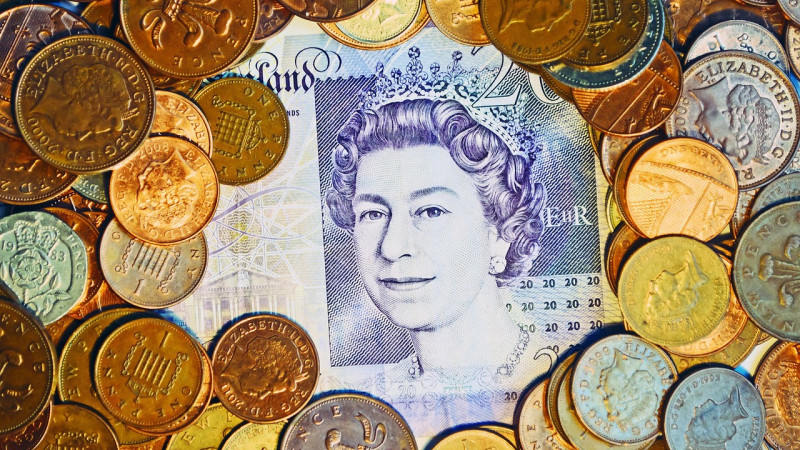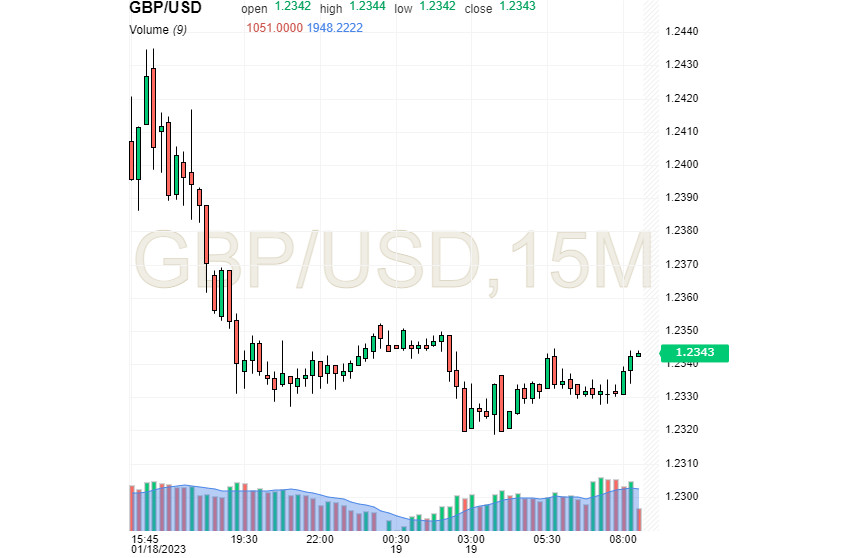
By the end of this week, the British currency was in high spirits, confidently moving to the next highs. This time the pound was a winner, although experts warn against excessive euphoria, as they fear further downward movement in the short term.
On Wednesday, January 19, the British currency edged up against the US dollar, as data showed British consumer price inflation dropped to a 3-month low of 10.5% in December but remains near 40-year highs. Analysts observed that prices for basic services rose to 6.8% from the previous 6.4%.
The current macro data may force the Bank of England to reconsider its monetary strategy and vote in February to raise its key rate by 50 bps. Against this backdrop, the pound continues to rise against the euro and the dollar. At the same time, the markets believe that the unexpected core inflation will force the Boe to hike the rate (by 50 basis points). According to analysts, the fate of the rate hike will be decided at the central bank's next meeting in February.
Current British inflation data was within consensus forecasts. This gave a small respite to both the BoE and households, which are now experiencing a cost of living crisis. The recent rise in the pound was recorded after impressive data on the UK labor market. Note that the country's wage indicator hit a record level, which is consistent with long-term inflationary pressures. According to economists, if there are no signs of a decline in service sector inflation in the near future, the BoE will remain aggressive.
According to the UK Office for National Statistics (ONS), the Consumer Price Index (CPI) dipped to 10.5% y/y in December from 10.7% in November. The CPI continues to retreat from its impressive peaks of December 1981, according to observers. As for the monthly UK Consumer Price Index, it was 0.4%. According to the ONS, core inflation (excluding food and energy) rose 6.3% in December, falling short of projections of 6.6%.
According to analysts, growing market expectations concerning the peak of the key rate will provide ample support to the pound. The current macro data from Great Britain is of no small importance in this matter. According to economists, the December inflation reports showed a slowdown in price growth. However, current data suggests that core inflation remains at a high level, which is far from the target 2%.
According to currency strategists at Pantheon Macroeconomics, inflation in the UK will fall to 9% in March this year, while core inflation will return to the 2% target by the end of 2023. The implementation of this scenario will allow the BoE to cut rates at the beginning of 2024, experts believe.
In this situation the pound was rising steadily, taking advantage of a short-term weakness of the dollar and the macro data. On Wednesday, January 18, GBP/USD remained above 1.2300 as a reaction to the release of the British CPI data. Over the previous day, the pair gained 0.15% and remained in an uptrend. On Thursday, January 19, GBP/USD was trading at 1.2343, continuing its upward spiral.

However, some currency strategists are pessimistic about sterling's medium-term prospects. Many analysts expect it to fall to 1.1000 in the long term. The reason is the imbalance in the UK economy caused by the negative effects of the mini-budget. Most of these problems are still unresolved, experts emphasize.
The pound, which approached 6-month highs, was also supported by US macro data. According to analysts, the current economic situation in the US shows that a recession is coming. Against this backdrop, the exchange rate of GBP against the dollar reached its peak since June 2022. Note that the current macro data from the US demonstrated the deterioration of the national economy and opened the way for further easing of inflationary pressures. Disappointing macro data suggest that the Federal Reserve's efforts to get inflation back to the 2% target are paying off. However, a sharp decline in inflation could trigger a prolonged recession, economists warn.





















